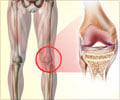Treatment of Fibromyalgia
Fibromyalgia is a unique experience for each patient and hence the treatment must be customized according to the presenting symptoms.
The best outcomes result from treatment programs that involve a combination of patient education, consistent exercises, stress reduction and medications.
Patient education is designed to help patients understand the condition and to enable them to cope with the wide range of symptoms. Unfortunately all the doctors may not be a reliable source of information; support groups and special organizations may be able to help the patient better, as they are a forum of interaction for people with similar experiences.
Medications
The most effective and commonly used medications in the treatment of fibromyalgia are tricyclic antidepressants. They reduce fatigue, muscle pain and spasms besides promoting sleep.
Analgesics / cortisone medications may be injected into the trigger point areas. Muscle relaxants, like cyclobenzaprine, can also be used to relieve the symptoms.
Both biofeedback and electroacupuncture have also been used to relieve pain.
Research & Future Course
Although fibromyalgia remains an enigma, numerous studies are being carried out that may pave the way for better diagnosis and treatment. Scientists are studying the role of numerous virus in causing fibromyalgia. Novel drugs that can block ‘substance P’ have been developed. Research has proposed that drugs which blocks more than one neurotransmitter may help in the effective treatment of fibromyalgia. Duloxetine is a new medication that has been very effective in controlling depression and reducing pain. All these, along with the other treatment regimes, will ensure that the quality of life of individuals suffering from fibromyalgia will not be compromised.
Moderate aerobic exercises, such as walking, cycling and swimming, are effective in treating fibromyalgia. These programmes are most beneficial when performed in the mornings on an alternate day basis. The role of exercise may be in helping to induce sleep in the patients.














